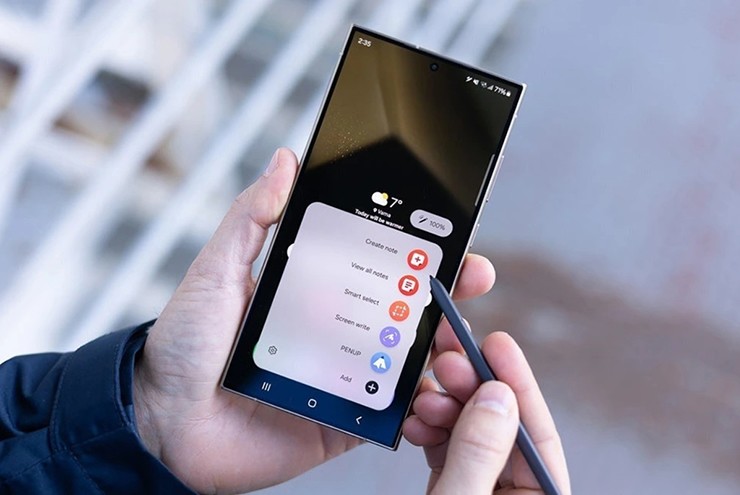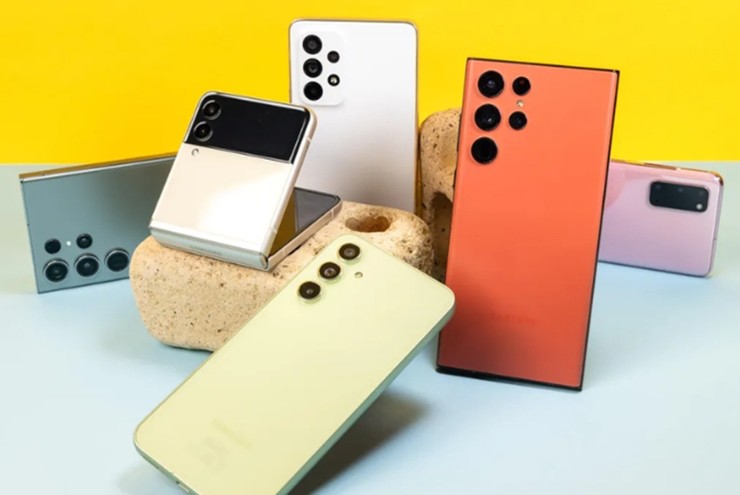Samsung has established itself as a leader in the Android ecosystem, setting new standards in hardware innovation, software optimization, and ecosystem integration.
Samsung 's dominance comes not only from market share but also from strategic investments in research and development (R&D), a strong supply chain, and a unique approach to software differentiation.
Hardware innovation
Samsung’s position in hardware is built on a strategy of vertical integration. The company designs and manufactures key components such as OLED displays, Exynos chips, DRAM, NAND memory, and camera sensors in-house. This allows Samsung to innovate at a pace that rivals can’t match.
Samsung devices deliver industry-leading standards.
Samsung’s AMOLED displays have become the gold standard in the industry, used not only in Galaxy devices but also in many other brands’ flagship smartphones. Samsung’s innovation is also reflected in its CMOS image sensors, such as the 200 MP ISOCELL HP2, which offers advanced features such as pixel binning, 8K video recording and fast autofocus. These sensors are used not only in Galaxy phones but also in products from other brands, affirming Samsung’s leadership in camera technology.
In the foldable smartphone segment, Samsung has been years ahead of its competitors. The Galaxy Z Fold and Z Flip series have set the standard for durability, hinge mechanism, and software optimization for foldable displays. Although competitors like Xiaomi and Huawei have also launched foldable smartphones, none can match the popularity, reliability, and global ecosystem support that Samsung offers.
Software ecosystem
Android-based One UI offers a user-friendly interface and features that enhance usability. The latest version, One UI 6.1, not only has a refined aesthetic but also improved functionality, making it stand out from other Android skins. This customization ensures a seamless user experience across Samsung's diverse product lineup.

One UI interface is highly appreciated.
While other Android manufacturers offer similar features, Samsung excels in usability and integration. The overall design of One UI strikes a balance of not being too fancy but not too simple, which makes it appealing. Samsung also offers its own app store with plenty of customization options, and its devices tend to have less bloatware and ads, which benefits consumers.
The software also offers features like Edge Panel, enhanced multitasking mode, and Samsung DeX, which turns your phone into a PC-like experience. In particular, Samsung is committed to providing up to seven years of Android updates and security upgrades for select smartphones, starting with the Galaxy S24 series. This support ensures users always have the latest features and security enhancements, improving the long-term reliability of the device.
Seamless device integration
Samsung's ecosystem extends beyond smartphones to tablets, smartwatches, headphones, smart TVs, and home appliances. With the Galaxy ecosystem, Samsung offers seamless integration between devices, allowing users to easily share files with Quick Share, automatically switch between devices with Galaxy Buds, and automate their homes with Samsung SmartThings. In particular, the "Link to Windows" feature helps Galaxy users sync notifications, messages, and even mirror their phone screen to their computer.


